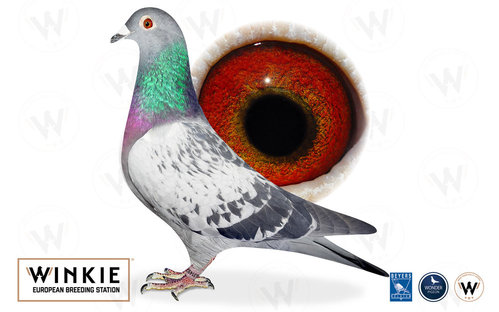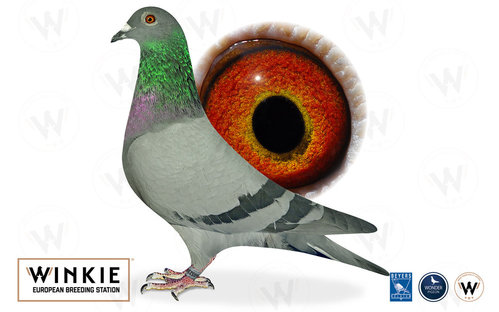Lineages

Linage Engels
|
ORIGIN Belgium |
|
DISCIPLINES Fondo, Medio Fondo |
|
Famous pigeons |
HISTORY
Jos and Jules Engels, over 70 years of history
Flor Engels and her sons Jos and Jules have built up one of the most important pigeon lofts in Europe. For 70 years, they have been breeding and racing homing pigeons. Flor Engels, patriarch of the lineage, started racing the birds in 1947. His son Jos (1939) was part of this from the beginning. His brother Jules (1940) became interested in the sport only a few years later.
Until 1980 they competed under the name Flor Engels, although both brothers were already fully involved in the ever-growing pigeon colony. They worked very hard, as the competitions coincided with the vegetable picking season, an activity to which the Engels have been dedicated all their lives. From 1980 they raced under the name of Flor Engels & Sons. And they did so until the death of the patriarch in 2002. Then they became Jos & Jules Engels. What is most striking is the simplicity of these champions. Without ostentation, but with an amazing knowledge of what is going on in the world of the sport in Belgium and even outside Europe. They have won 8 times the first position in national, 7 times in national zone B, 2 times semi-national and 81 times first provincial, among other titles.
The top breeders
The best breeding pigeons that the Engels loft has bred are, among others: De 178, 086, De Dikke and De Oude 93. However, the basic male of the Engels lineage is the well-known Den 231. This super breeder is the one found in the whole colony of Jos and Jules Engels.
Females in the widowhood system
Every year, 30 females are trained to compete in the widowhood system. Their nest boxes are far enough away from the widowers' loft so as not to disturb them after their daily training. In order to stay in the loft, the future racing females must pass their exams when they are young. Only the best youngsters qualify. The loft consists of two identical boxes, both with 15 boxes and a resting place where they can only perch. All places in the loft are protected so that they cannot be seen.
Females are paired with adult males who have already been assigned a nest. They first pair up at the end of November. After about 5 days, they return to the aviary. In early March they pair for the second time and it is at this time that they are allowed to rear their chicks. During this period, the widowhoods train daily between 6 and 7 a.m. gradually. In the evening they do so for an hour. Then they return to their incubation nests where they feed together. After an hour, they are taken to the adjoining loft, where there are no lockers and it is quite dark. This encourages them to rest. From this period, the racing season begins and lasts until mid-August.
Weather permitting, the females run their first long distance race in the first weekend of May. To increase motivation after a few weeks of widowhood, the bitches are paired for the last two middle distance races (Bourges and Argenton). According to Jos, it is important that the pigeons are basketed weekly and preferably for the races where they stay in the basket for two nights. Experience has taught them that racing with widowhood females is an ideal system up to the extreme middle distance provincial races. Starting with the long distance (Limoges) the widowhood females experience problems with the rhythm, Jos Engels explains. Pigeons racing at weekly distances of 500 km do not have to train so hard, in Jos' opinion. 30 to 45 minutes every day (with the flag when necessary) is more than enough.
What about males?
We can speak here of classic widowhood. The males are, like the females, mated at the end of November. They breed a round of youngsters and then go racing until mid-March. The yearlings remain in the races until the end of January. Only when breeding with the adult pigeons is finished do the yearlings receive a permanent nest. Once breeding is finished, the adult males are allowed to return to their roost, along with any chicks that may remain. After five days of brooding, they reach final widowhood. The real season begins at this time. Weather permitting, Bourges is achieved in 5 stages. After this, they have to run every two weeks. When the season is over, they can mull a little longer, but soon they are separated, so there will be no breeding for the widowers after the races. They are returned to the aviaries for three months.
Competing with the young birds
The first round consists of 100 youngsters, the second consists of 70 youngsters, mainly from the breeders. The two batches are darkened from 1 March to the end of June and then from 17.30 h until 08.30 the following morning. Using this method means that there are no problems with moulting up to and including the last race. When the young are separated from their parents it is done according to sex. There is one loft for females and three for males. The second round is placed in a different loft. The first training races are planned for the end of April and the beginning of May. The pigeons do not have a nest before starting the widowhood system. Once they are in love, they race in the widowhood system. Before basking, the youngsters can see their mates for a few minutes. When they return home, the love story lasts for a few hours or until the next day, depending on how the race went.
News
Brothers Jos and Jules are 77 and 78 years old, respectively. They have no successors in sight, which is why they are thinking of reducing the number of birds in their loft, as they cannot cope with all the tasks involved. For this reason, they have decided, through the Herbots family, to reduce their lineage by means of a series of auctions. The Engels brothers do not plan to sell their gold-based breeding stock, but they do plan to sell a large number of birds.
Source: PIPA



























